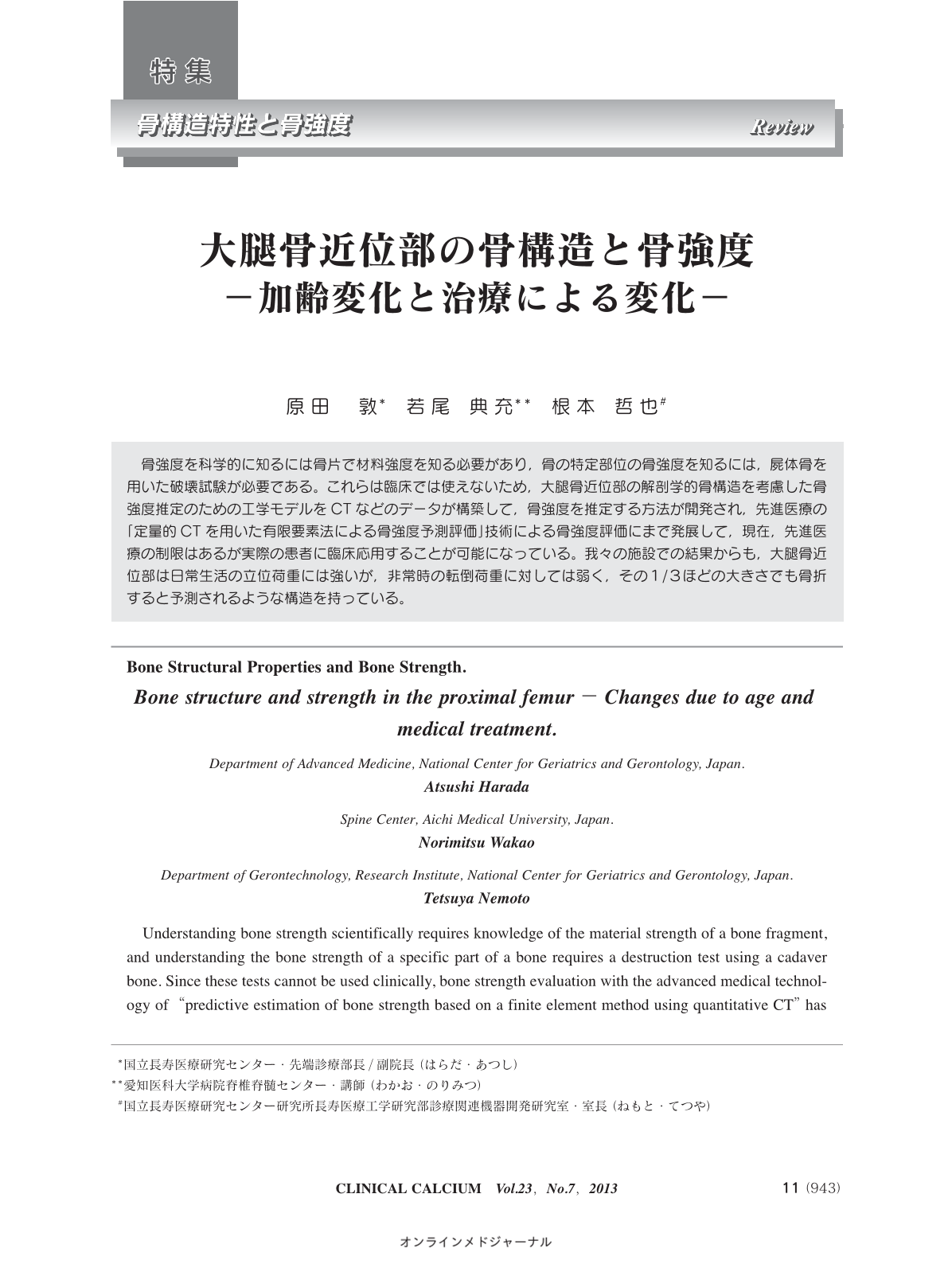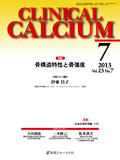Japanese
English
- 有料閲覧
- Abstract 文献概要
- 1ページ目 Look Inside
- 参考文献 Reference
骨強度を科学的に知るには骨片で材料強度を知る必要があり,骨の特定部位の骨強度を知るには,屍体骨を用いた破壊試験が必要である。これらは臨床では使えないため,大腿骨近位部の解剖学的骨構造を考慮した骨強度推定のための工学モデルをCTなどのデータが構築して,骨強度を推定する方法が開発され,先進医療の「定量的CTを用いた有限要素法による骨強度予測評価」技術による骨強度評価にまで発展して,現在,先進医療の制限はあるが実際の患者に臨床応用することが可能になっている。我々の施設での結果からも,大腿骨近位部は日常生活の立位荷重には強いが,非常時の転倒荷重に対しては弱く,その1/3ほどの大きさでも骨折すると予測されるような構造を持っている。
Understanding bone strength scientifically requires knowledge of the material strength of a bone fragment, and understanding the bone strength of a specific part of a bone requires a destruction test using a cadaver bone. Since these tests cannot be used clinically, bone strength evaluation with the advanced medical technology of “predictive estimation of bone strength based on a finite element method using quantitative CT”has been developed to estimate bone strength with consideration of anatomical bone structure of the proximal femur. Today this method has come to be clinically applicable with actual patients. Investigations in our hospital have also led to the finding that while the proximal femur is strong enough for a standing load in daily life, it does not readily withstand the load from falls in accidents, and has a structure such that fractures may be predicted to occur at about one-third that size.



